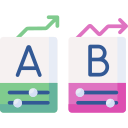Case Studies of Successful Cross-Platform App Implementations
Chosen theme: Case Studies of Successful Cross-Platform App Implementations. Dive into vivid, real-world lessons that show how teams shipped fast, scaled confidently, and delighted users across devices. Read, share your perspective, and subscribe for fresh case-led insights every week.
Framework selection driven by outcomes
Teams consistently chose frameworks by mapping outcomes to constraints: performance budgets, team skills, plugin availability, and time-to-market. Successful case studies highlight structured scorecards comparing Flutter, React Native, and Kotlin Multiplatform, rather than opinion wars. Share your criteria and help readers refine theirs.
Architecture designed for change
Winners favored clean, layered architectures with modular boundaries, enabling updates without risky rewrites. They separated domain logic from UI, used dependency injection to swap services, and enforced lint rules. Tell us how your architecture supports experiments without breaking production.
Measuring what actually matters
Case studies tracked crash-free sessions, time-to-first-interaction, cold start, bundle size, and release cadence. They tied metrics to business goals like activation and retention. Comment with the one metric that most changed your team’s roadmap priorities.
Speed-to-Market Wins: A Startup Story
Eight weeks, two platforms, one codebase
Two developers shipped a feature-complete MVP in eight weeks by sharing over seventy percent of code. They focused on onboarding, core flows, and push notifications, deferring animations and polish. Their waitlist doubled after launch. Would you cut polish or features first?
Design consistency without losing native feel
They adopted a token-based design system and built reusable components that adapted to platform patterns. iOS felt at home with native navigation, while Android respected Material defaults. Tell us how your team balances consistency with platform nuance.
Iterating in public with users
They ran rapid TestFlight and Play beta cycles, tagging feedback by severity and effort. Small wins—offline drafts, clearer errors—drove high ratings. Share your best tactic for collecting actionable beta feedback without overwhelming your roadmap.
Scaling to Millions: Enterprise Case Findings
Modular migration instead of a big bang
One enterprise replaced screens gradually using a strangler pattern, guarded by feature flags and analytics. The hybrid approach allowed rollback and performance benchmarking. What slice would you migrate first: onboarding, search, or checkout? Explain your reasoning below.
Performance tuning under real load
At scale, they discovered jank in feed rendering. Instrumentation pinpointed waterfall requests and expensive layout passes. Solutions included image prefetching, memoized widgets, and prioritized schedulers. Share the tool that most helped you find performance hotspots across platforms.
Security and compliance that travel well
The team met enterprise standards with secure storage, certificate pinning, MDM support, and obfuscation. They aligned with OWASP MASVS and integrated SSO flows. Comment with your top tip for balancing security rigor and developer velocity.



Design Systems and Accessibility at Scale
Teams used tokens for color, spacing, and typography, then auto-generated themes for iOS and Android. Platform-adaptive components reduced duplication while preserving brand. How do you keep tokens synchronized without blocking rapid experimentation across squads?
Design Systems and Accessibility at Scale
Successful apps labeled controls for screen readers, maintained contrast, supported large text, and honored reduced motion. They practiced keyboard navigation and semantic grouping. Which accessibility test catches the most issues for you during cross-platform development?


Team and Process Lessons That Stick
High-performing teams staffed a core guild responsible for cross-platform modules, lint rules, and package health. Clear ownership reduced regressions and accelerated reviews. How do you structure ownership to balance autonomy and consistency?
They invested heavily in unit and widget tests, with selective end-to-end coverage on critical paths. Device farms caught vendor quirks early. What’s your ratio of unit to integration tests that actually moves quality forward?
Phased rollouts guarded stability while feature flags enabled safe experiments. Release notes focused on user value, not just fixes. Which rollout strategy has helped you recover fastest from an unexpected production issue?

Technology Choices in the Wild
Flutter: unified UI with speed
Teams favored Flutter for consistent rendering and hot reload, especially when custom UI was central. A marketplace app improved iteration speed and visual fidelity using a shared widget library. Where has Flutter’s rendering model helped you most?
React Native: ecosystem and gradual adoption
React Native excelled where web skills and a rich ecosystem mattered. New architecture features like Fabric and TurboModules reduced bridging overhead. Which library or pattern has most improved your React Native production stability?
Kotlin Multiplatform: shared logic, native UI
When teams needed native UI polish with shared business logic, Kotlin Multiplatform shined. Sharing domain and data layers preserved performance while unifying rules. What boundaries do you set between shared code and platform-specific features?
